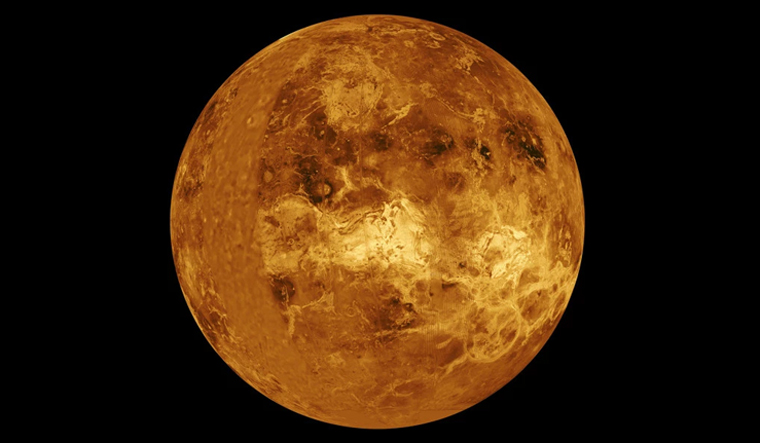Japanese scientists have identified a giant streak structure among the clouds covering the planet Venus, based on observation from the spacecraft Akatsuki.
The researchers from Kobe University in Japan also revealed the origins of this structure using large-scale climate simulations.
Venus is often called Earth's twin because of their similar size and gravity, but the climate on Venus is very different.
It rotates in the opposite direction to Earth, and a lot more slowly—about one rotation for 243 Earth days.
According to the study, published in the journal Nature Communications, about 60 kilometres (km) above Venus' surface a speedy east wind circles the planet in about four Earth days (at 360 km/hour), a phenomenon known as atmospheric superrotation.
The sky of Venus is fully covered by thick clouds of sulphuric acid that are located at a height of 45-70 km, making it hard to observe the planet's surface from Earth-based telescopes and orbiters circling Venus.
Surface temperatures reach a scorching 460 degrees Celsius, a harsh environment for any observations by entry probes. Due to these conditions, there are still many unknowns regarding Venus' atmospheric phenomena.
To solve the puzzle of Venus' atmosphere, the Japanese spacecraft Akatsuki began its orbit of Venus in December 2015.
One of the observational instruments of Akatsuki is an infrared camera "IR2" that measures wavelengths of two micrometres (m).
This camera can capture detailed cloud morphology of the lower cloud levels, about 50 km from the surface.
Optical and ultraviolet rays are blocked by the upper cloud layers, but thanks to infrared technology, dynamic structures of the lower clouds are gradually being revealed.
Before the Akatsuki mission began, the research team developed a programme called AFES-Venus for calculating simulations of Venus' atmosphere.
On Earth, atmospheric phenomena on every scale are researched and predicted using numerical simulations, from the daily weather forecast and typhoon reports to anticipated climate change arising from global warming.
For Venus, the difficulty of observation makes numerical simulations even more important, but this same issue also makes it hard to confirm the accuracy of the simulations.


